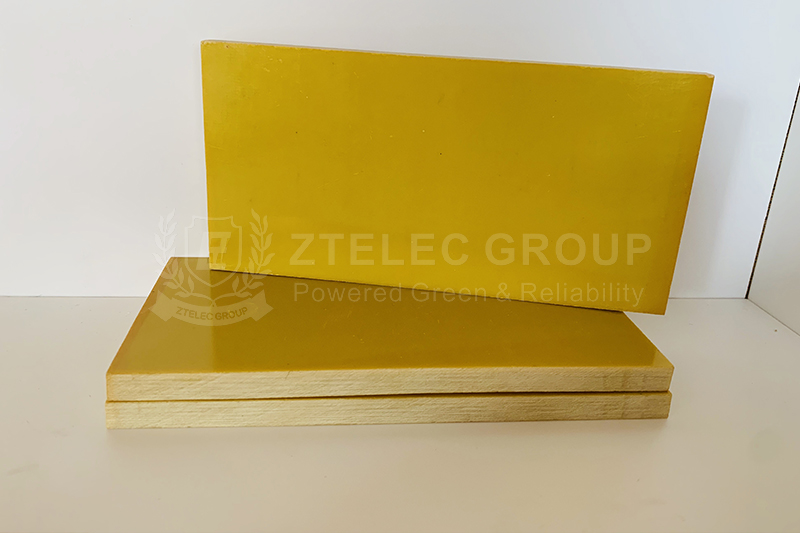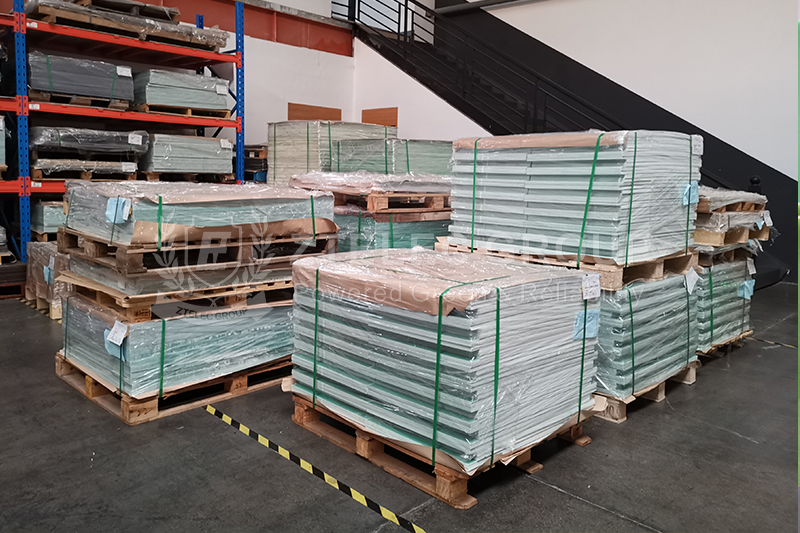Garolite G11/FR5, a high-performance glass-fiber-reinforced epoxy laminate, has excellent mechanical strength, electrical insulation, high – temperature resistance, and flame – retardant properties. Thanks to these characteristics, it has extensive applications in various fields such as electronics and electrical engineering, aerospace, automotive manufacturing, and industrial equipment. It is particularly suitable for critical components that demand high mechanical strength and fire safety. However, to fully unleash its performance advantages, proper machining methods play a decisive role.

Material Inspection
Before processing Garolite G11/FR5 sheets, meticulous inspection is essential. Firstly, carefully examine the surface of the sheet to confirm the absence of defects such as scratches, cracks, and bubbles. Then, accurately measure the thickness of the sheet using a vernier caliper to ensure it meets the design requirements. At the same time, check the size and dimensions of the sheet to guarantee there is sufficient material for subsequent processing.
Equipment Preparation
According to the processing requirements, preparing suitable processing equipment is of great significance. Common processing equipment includes CNC milling machines, drilling machines, laser cutting machines, etc. Ensure that the equipment is in good working condition, the cutting tools are sharp and correctly installed. For CNC equipment, input the processing program in advance and conduct a simulation run to verify the accuracy of the program.
Mechanical Cutting
For thicker Garolite G11/FR5 sheets, mechanical cutting is a viable method, such as using a sawing machine for cutting. During this process, select the saw blade properly. The number of teeth and the material of the saw blade should be determined according to the thickness and hardness of the sheet. When cutting, the cutting speed should be uniform to prevent the cutting surface from being uneven or having burrs due to too fast or too slow a speed. In addition, control the cutting pressure to avoid sheet deformation.
Laser Cutting
Laser cutting is a cutting method with both high precision and high efficiency, suitable for Garolite G11/FR5 sheets of various thicknesses. It can cut complex shapes, with a high – quality cutting surface and a small heat – affected zone. Before performing laser cutting, adjust parameters such as laser power, cutting speed, and focal position according to the thickness and material of the sheet. During the cutting process, pay close attention to ventilation to prevent the smoke and harmful gases generated by the laser from endangering human health.

Drill Bit Selection
When drilling, choosing the right drill bit is crucial. For Garolite G11/FR5 sheets, carbide drill bits are generally used. The diameter of the drill bit should be selected according to the design requirements. Also, consider the length and tip angle of the drill bit. A longer drill bit can provide better rigidity.
Drilling Operation
Before drilling, first use a center drill to make a positioning hole on the sheet to ensure the accuracy of the drilling position. When drilling, control the drilling speed and feed rate. The drilling speed should not be too fast to prevent the drill bit from overheating and being damaged; the feed rate should be uniform to avoid the drill bit getting stuck or breaking. During the drilling process, clean the drill chips in a timely manner to prevent the drill chips from clogging the drill bit.
Milling Cutter Selection
When milling, select the appropriate milling cutter according to the processing requirements. For surface milling, an end mill can be selected; for contour milling, a ball – nose mill or an end mill can be chosen. Parameters such as the diameter, number of teeth, and helix angle of the milling cutter should be determined according to the processing material and processing accuracy.
Milling Parameter Setting
Reasonably setting milling parameters is the core to ensure processing quality. The milling speed, feed speed, and cutting depth should be determined according to the type of milling cutter, the material of the sheet, and the processing requirements. Generally, the milling speed should not be too high to avoid excessive wear of the milling cutter; the feed speed should be appropriate to ensure that the surface roughness of the processed part meets the requirements; the cutting depth should be adjusted reasonably according to the rigidity of the milling cutter and the hardness of the sheet.
Deburring
After processing, burrs may remain on the edges and hole openings of the sheet. Use sandpaper, files, or deburring tools to remove the burrs to ensure the surface of the processed part is smooth.
Cleaning
Clean the processed part with a detergent to remove oil stains, dust, and chips on the surface. After cleaning, rinse it thoroughly with clean water and dry it.
Inspection
Conduct a comprehensive inspection of the processed part to check whether its dimensional accuracy, shape accuracy, and surface quality meet the design requirements. Measuring tools such as vernier calipers, micrometers, and plug gauges can be used for measurement. For non – compliant processed parts, rework or scrap them in a timely manner.
If you need our products please write down any questions, we will reply as soon as possible.
There are three ISO certificates for quality certification. The certificates will be shown later. ISO
After receiving the advance payment, the production cycle is 15-25 days. And the transportation cycle should be calcul……
We supply with installation guide and user manual for each transformer. If you do not understand them. We will offer v……